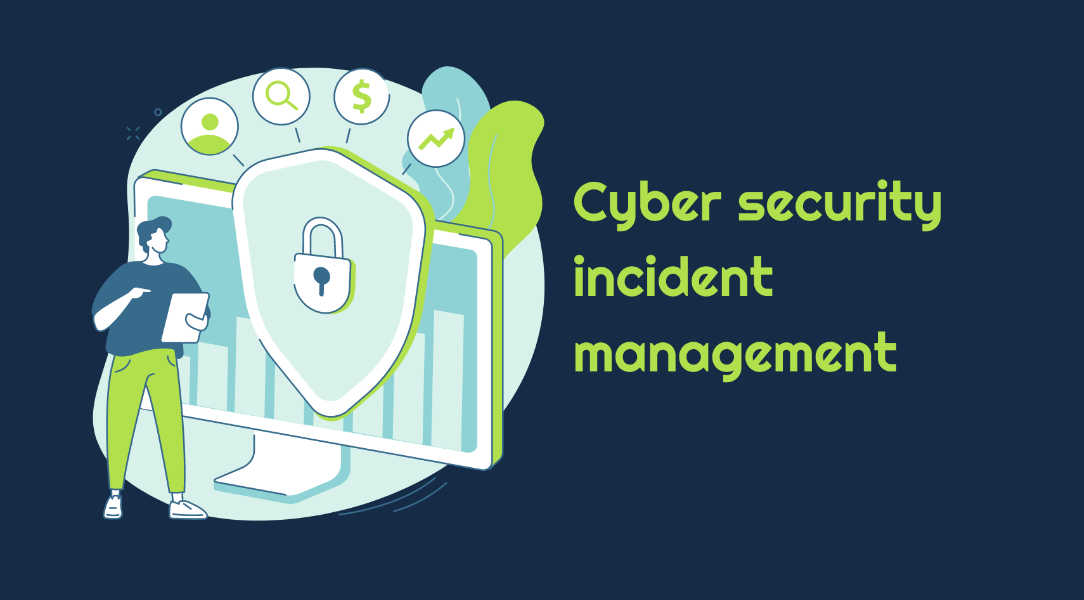
Security Incident Management (Image by Phriendly Phising)

Security Incident Management (Image by Phriendly Phising)
Security incident management is a proactive and continuous cycle of identifying, analyzing, prioritizing, investigating, and responding to security events to minimize business disruption, data loss, and reputational damage.
As we know, businesses face a continuously big challenge: cyber threats. They’re everywhere, and they can strike anytime. Sure, in the past, we might have thought, “Nothing’s happened yet, so why bother?”
But imagine trying to rebuild trust with customers after a breach or explaining to investors how a ransomware attack crippled your operations. Ouch.
SIM helps you avoid that gut-wrenching feeling by preventing incidents before they become a full-blown crisis. How?
SIM focuses on identifying and handling these threats. Their job? To spot a cyber issue quickly, address it, and prevent it from becoming more significant.
The impact? Huge. With adequate security incident management, companies can keep their data safe, ensure their operations run smoothly, and maintain their customers’ trust.
One intriguing aspect of SIM is its application in diverse contexts, such as the National Disability Insurance Scheme (NDIS).
In the scope of NDIS incident management, SIM takes on an even more nuanced role. SIM protects sensitive data and ensures compliance with specific regulations and standards set for the NDIS.
This specialized application of SIM in NDIS incident management highlights its versatility and the critical need for tailored approaches in different industry sectors.
So, let’s review how SIM can be effectively deployed in your business to strengthen your defenses against the ever-evolving landscape of cyber threats.
The SIM approach is akin to a strategic game, where each online interaction represents a calculated risk, and every data point holds immense value, potentially attracting cyber threats.
A security breach can hit a company where it hurts the most. First, there’s the immediate financial damage.
Think of fines, legal costs, and the expenses to fix the breach. But the aftermath goes deeper.
A breach can erode customer trust; trust is gold in business. Once trust is compromised, restoring it is not only challenging but also costly.
So, proactive IT security incident management is more than scrambling after a breach. An effective SIM is about being steps ahead.
Effective security information management (SIM) involves more than reacting to incidents. It requires anticipating and proactively addressing potential threats.
Once a potential breach is detected, SIM promptly activates predefined response protocols, isolates affected systems, alerts relevant personnel, and confines the damage to prevent a broader impact.
SIM requires continuous monitoring, early identification of potential threats, and plan development to accomplish this complex process.
And yes, incident response management is central to this SIM process, a systematic approach to handling and mitigating the aftermath of a security breach or attack.
So, This proactive SIM, combined with incident response management, is crucial in safeguarding your organization’s assets, financial health, and, importantly, its reputation in the eyes of its customers and the public.
One thing we have to realize is there is no one-time fix to security. Yes, security is an ongoing journey. So, all you need to do is understand these interconnected processes.
Understanding how the SIM functions as a strong and essential defense against cyber threats requires understanding these interrelated processes.
Remember, the SIM process described below is a continuous cycle of vigilance, investigation, action, and improvement designed to keep your digital world safe.
The first step involves detecting potential security incidents. Teams use intrusion detection systems and monitoring tools to spot unusual activities that may indicate a security breach.
This early detection is crucial as it allows for a swift response, minimizing potential damage.
Identifying an incident relies heavily on robust monitoring systems, constantly scanning for anomalies in network traffic, system logs, and user activities.

Once an incident is identified, it’s logged and categorized. This step is vital for maintaining clear records, which aid analysis and reporting.
Incidents are classified based on their severity and type, such as a virus attack, data breach, or system compromise. This categorization helps in prioritizing the response.
Proper documentation of each incident ensures that every detail is recorded, aiding future analysis and helping to prevent similar occurrences. It’s about recording what happened, when, how, and the potential impact.
Following logging and categorization, security teams dive into investigation and analysis. They scrutinize the incident to understand its scope and impact.
This phase often involves digital forensics and threat intelligence to trace the breach’s source, understand the attackers’ methods, and determine the extent of the damage.
This detailed analysis is critical to forming an effective response strategy and learning from the incident to bolster defenses against future attacks.
The next step is containment and eradication. Here, the focus is on isolating affected systems to prevent the spread of the threat and then eliminating the threat from the environment.
Containment strategies may include disconnecting affected devices from the network or shutting down specific systems.
After containment, efforts shift to eradicating the threat, which could involve removing malware, closing security loopholes, and applying patches. This phase is crucial to deleting the threat and can’t cause further damage.
Finally, there’s the recovery and post-incident review. In recovery, the goal is to restore affected systems and services to full functionality, ensuring they are clean of any threats and vulnerabilities.
This phase also involves monitoring to ensure the systems function usually and the threat has not re-emerged. After recovery, a post-incident review is conducted.
This review is a critical component, providing insights into the effectiveness of the response and highlighting areas for improvement.
Lessons learned from this review are instrumental in strengthening the organization’s security posture for the future.
As we move into 2024, the cyber threat landscape evolves, making robust SIM systems more critical. At the same time, a robust SIM is a must for your company as an integral part of IT incident management.
These systems are instrumental in quickly identifying and responding to incidents and minimizing potential damage.
They also play a significant role in maintaining customer confidence and protecting an organization’s data and operational integrity.
So yes, by strengthening your security incident management strategies, your company will naturally strengthen your IT incident management capabilities, creating a more resilient and responsive IT infrastructure.